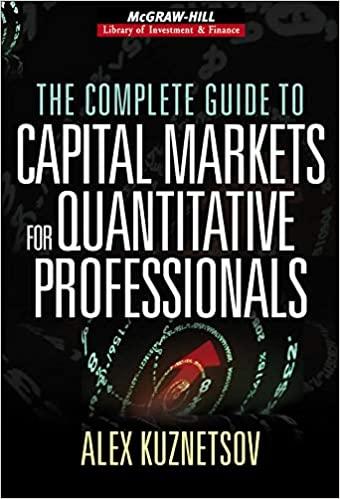1-What's the difference between a stock's current market price and its intrinsic value? Do stocks have known and provable intrinsic values, or might different people reach different conclusions about intrinsic values? Should a firm's managers help investors improve their estimates of the firm's intrinsic value? 2. What are three techniques stockholders can use to motivate managers to maximize their stock's long-run price? Should managers focus directly on the stock's actual market price or its intrinsic value, or are both important? Explain. 3-What's the difference between a commercial bank and an investment bank? What is an Exchange traded fund and how does it differ from a Mutual Fund or a Hedge Fund? 4- List the major types of financial institutions, and briefly describe the primary function of each. What are some important differences between mutual funds, Exchange Traded Funds, and hedge funds? How are they similar? 5.What's the difference between a commercial bank and an investment bank? What are some important differences between mutual funds, Exchange Traded Funds, and hedge funds? How are they similar? 6-Describe how bond convexity affects the theoretical linear price-yield relationship of bonds. What are the implications of bond convexity for estimating changes in bond prices? 7-Explain the difference between stand-alone risk and risk in a portfolio context. Describe how risk aversion affects a stock's required rate of return. 8-Is the price of a long-term bond or the price of a short-term security more sensitive to a change in interest rates? Why? Define and graph duration, modified duration, convexity of a bond. 9-Discuss the difference between diversifiable risk and market risk and explain how each type of risk affects well-diversified investors. 10. Discuss how changes in the general stock and bond markets could lead to changes in the required rate of return on a firm's stock. 1-What's the difference between a stock's current market price and its intrinsic value? Do stocks have known and provable intrinsic values, or might different people reach different conclusions about intrinsic values? Should a firm's managers help investors improve their estimates of the firm's intrinsic value? 2. What are three techniques stockholders can use to motivate managers to maximize their stock's long-run price? Should managers focus directly on the stock's actual market price or its intrinsic value, or are both important? Explain. 3-What's the difference between a commercial bank and an investment bank? What is an Exchange traded fund and how does it differ from a Mutual Fund or a Hedge Fund? 4- List the major types of financial institutions, and briefly describe the primary function of each. What are some important differences between mutual funds, Exchange Traded Funds, and hedge funds? How are they similar? 5.What's the difference between a commercial bank and an investment bank? What are some important differences between mutual funds, Exchange Traded Funds, and hedge funds? How are they similar? 6-Describe how bond convexity affects the theoretical linear price-yield relationship of bonds. What are the implications of bond convexity for estimating changes in bond prices? 7-Explain the difference between stand-alone risk and risk in a portfolio context. Describe how risk aversion affects a stock's required rate of return. 8-Is the price of a long-term bond or the price of a short-term security more sensitive to a change in interest rates? Why? Define and graph duration, modified duration, convexity of a bond. 9-Discuss the difference between diversifiable risk and market risk and explain how each type of risk affects well-diversified investors. 10. Discuss how changes in the general stock and bond markets could lead to changes in the required rate of return on a firm's stock







